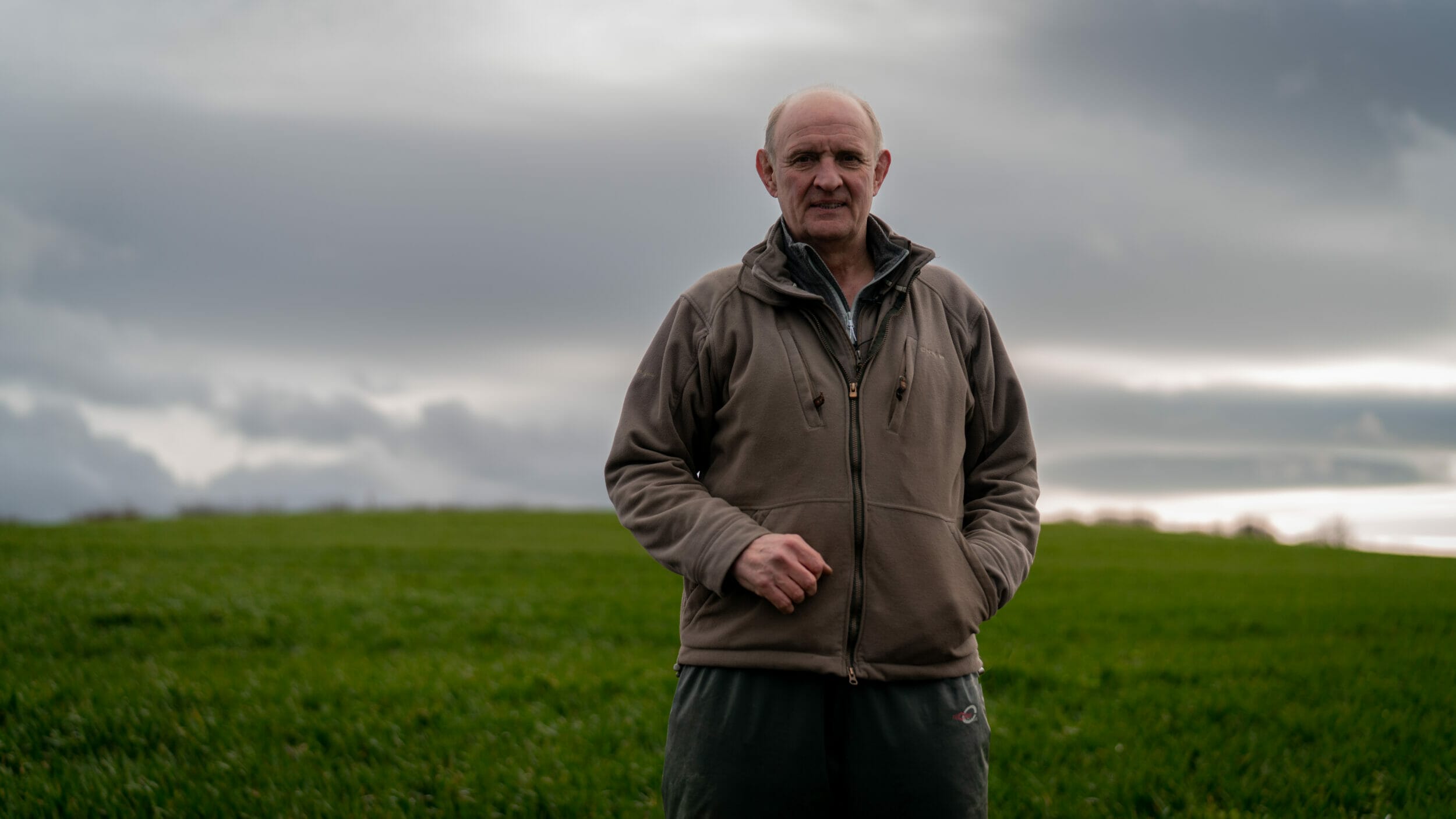
John Aynsley
Working with soils which vary from cold clay to light loams, he is trying to increase carbon content with applications of muck from the livestock, straw and widening rotations. For the arable part of the farm, a transition is ongoing to direct drill from min-till.
Mr Aynsley says: “We are working towards direct drilling everything, partly to save time and labour, but caring for the soil still requires really careful attention to detail.”
As he believes in a step-by-step transition, this year some of the wheat crops have been min-tilled, while others were direct drilled.
So far, tillage has not made much of a difference to crop development, with both methods looking equally good.
John Aynsley is also widening the rotation from three to five years. Part of the reasoning for this is to move away from growing oilseed rape in a close rotation, because club root has been raising its head, he explains.
As a result of the changes, his plans are for 40% of the arable crops to be first wheats, grown for the local feed market.
“Running an estate so close to the coast creates the extra challenge of a microclimate, which brings in sea breezes and sea mists, complicating agronomic decisions and limiting possible spray days,” says Mr Aynsley.
spray days,” says Mr Aynsley.
Partly because of this, the two main characteristics he looks for in a wheat variety are resistance and suitability for early drilling and these are the very reasons why LG Skyscraper does so well for him.
Mr Aynsley says: “We need to grow varieties with good disease resistance, so I look at the untreated yields in the AHDB Recommended List (RL).”
With an RL untreated yield of 81%, he has found LG Skyscraper to be a good fit into his system. “ The untreated yield is an important value, as it shows just how robust the variety’s disease resistance ratings are, and how well they stand up to disease.”
This is the second year that John has grown the soft feed wheat variety, which he uses primarily as a barn filler. Out of a total of 260ha dedicated to growing wheat, 60ha have been drilled with LG Skyscraper, which has gone in as a first wheat behind oilseed rape.
Talking about last year’s crop he remarks: “At the beginning of August it looked superb but unfortunately disastrous weather at the end of the month cost us between 1 t/ha and 2 t/ha, yielding 10.4 t/ha in the end”.
Fertiliser application strategy is dependent on needs and conditions at the time and he says: “When we are crop walking at the end of February or the beginning of March, we take a view of the potential of the crop and design our strategy for spring.” The average is 200kg N/ha in four splits, applied as liquid fertiliser.
“In this area where the soils have high magnesium (Mg) levels, we use sulphur to balance it, applying Calcifert S, which we find also helps improve friability and reduce acidity.”
When it comes to fungicide strategy, he reveals that he does not always apply a T0, but T1, T2 and T3 are standard, noting that the local climate can make it challenging to ensure timeliness of application.
This is why he looks to resistance, rather than fungicides, to ensure a healthy crop.
He goes on to mention that he likes to drill as early as he can get away with. “We like to start in the first week of September and complete cereal drilling by the end of the third week of the month.”
It doesn’t always work out that way because if inclement weather settles in, drilling can be halted for ten days at a time. However LG Skyscraper can be drilled from September through to early February, so this is not a limiting factor.
“Without a doubt, the most important influence on how our crops yield is the weather, which dominates everything and is completely out of our control, so we look for varieties that are best able to cope with this.”
- Consistent high performance across all situations
- Good performance in a second wheat situation
- Good agronomics suited to a blackgrass situation
- Good bold grain quality with a high specific weight
- Widely used by distillers and in soft grists

































